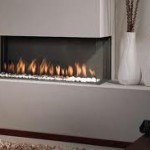In Slovakia the utilization of naked flame fireplaces became quite popular. The technology concerned is the one not (over-)burdening our environment. The naked flame fireplace supplies a residential premise with a home-like feeling – creating the family atmosphere. It is a dominant factor in the overall architecture. It facilitates us with the feeling of mastering the fire and last but not least it saves the costs related to the overall heating of building, and quite recently for the preparation of hot utility water preparation. The correct, and apt selection of design, purpose and technical parameters are to be consulted with the professionals.
DIVISION CHART OF FIREPLACES
- Hot-air naked flame fireplaces and solid fuel stoves and fireplace units (inserts, fireboxes)


- Hot-air naked flame fireplaces and solid fuel stoves and fireplace units (inserts, fireboxes)


- Accumulative fireplaces and stoves


- cast-iron stoves, naked flame stoves and cooking stoves


- Bio stoves

- Gas fireplaces


Furthermore, we may segregate these products depending whether they are in-built or free standing, eventually overhung. Having the enclosed or open fire place. Possibly having two-access fire place, two sided fireplace inserts
HOT-AIR FIREPLACE
Hot-air heating is based on heating using the hot air generated by the hot-air fireplace insert, which is encased in the thermal insulation – accumulative materials. The air circulating in the area between gets warmed and via the grills penetrates into the area of the adjacent rooms. Apart from this fact, the fireplace heats by means of the radiant heat via the door and the very insulation casing, cladding of the fireplace.
Options for air distribution:
- via the grill in the upper part of the fireplace – cladding
- via the grills and distribution channels, inside air access points into the separate rooms by the mediation of a fan, fan-assisted.
HOT-WATER FIREPLACES:
The principle of operation with the hot-water fireplace is similar to the hot-air one or the accumulative one. The difference rests however with the fact that the hot-air fireplace creates not only hot air, the radiant element of heating, but at the same time, if not predominantly hot utility water. The greater part of the heat performance with the heating process is aimed at the creation, preparation of hot utility water and the lesser part for the warming up of the ambient air.
Various types of hot-water fireplaces
- with an integrated hot water exchanger.
- With an external heat exchanger which is to be connected onto the smoke chamber of the firebox.
Hot-water fireplace in this way facilitates the preparation of hot utility water which may be used in the system of heating as well as heats the ambient air. In this way heated water may achieve very high temperatures around 90 degrees Celsius. That is why this almost boiled water is to be accumulated in the collection, storage tank. As the only company in Slovakia we do offer a comprehensive system of heat pump and the hot-water fireplace intended for both heating the premises and the preparation of hot utility water (TUV) and this by means of the system of compact a fully-equipped control room/operation panel/ancillaries. More information to be obtained in the Section Heat pumps.



ACCUMULATIVE FIREPLACE
Operates on the principle of radiant heat. It is to be compared to the radiation of the sun. Radiant heat is spread uniformly into all the directions and does not warm the air, but the surrounding objects onto which it falls (walls, ceiling, floor and the other). Following that the ambient air is warmed up. An accumulative stove, or fireplace do have a long lifespan and do heat up the ambient area long after the fire from the fireplace had extinguished itself.



